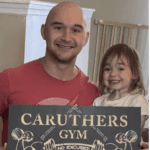Killer Alternatives For The Barbell Overhead Press
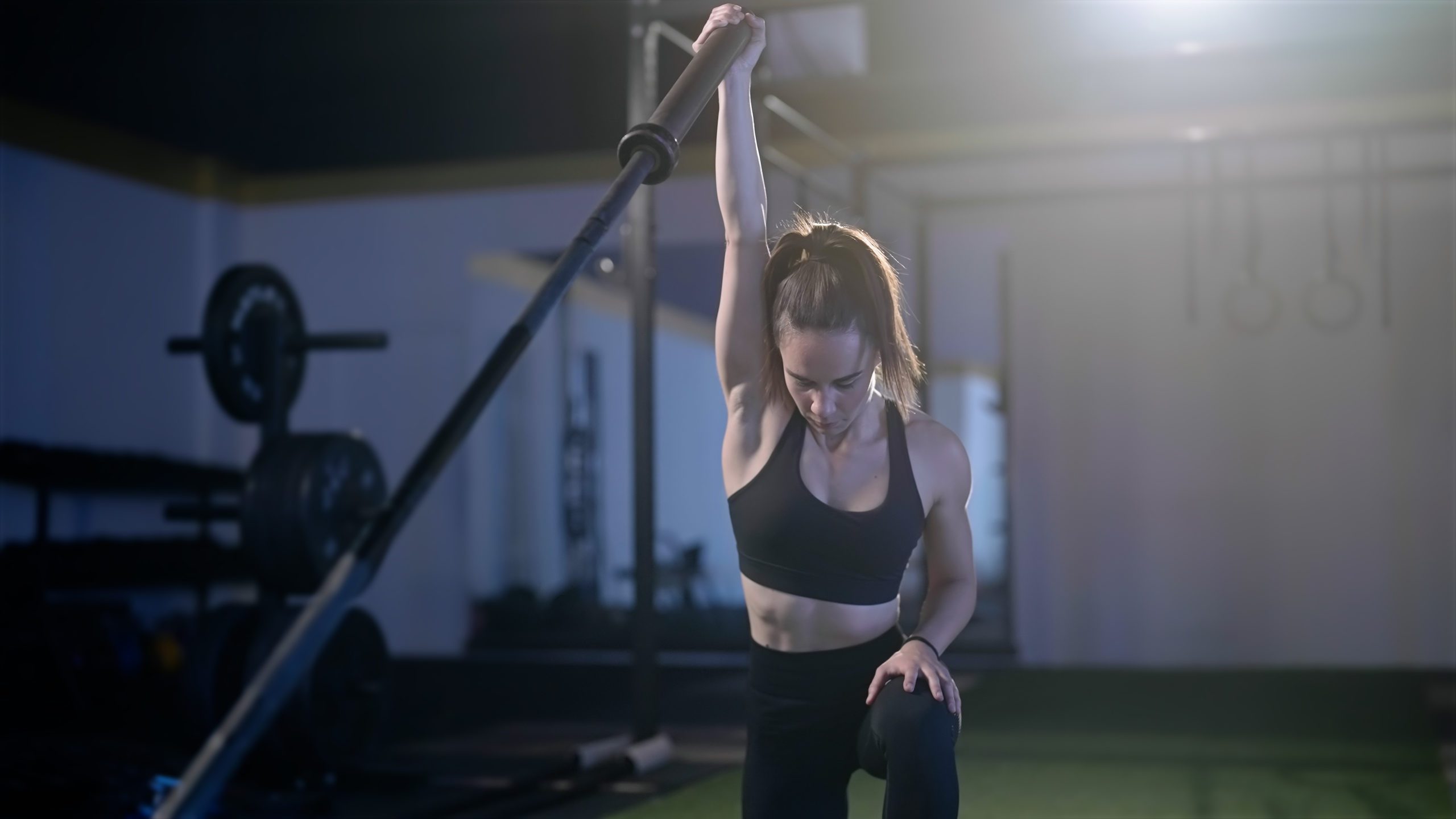
Overhead pressing is one of the most challenging compound movements. If you’re lacking in core stability and shoulder mobility, pressing weight overhead can be downright frustrating. What if you have muscular asymmetries or imbalances? What other movements out there can you work on to strengthen your overhead press or work around injuries?
Cory Caruthers is a trainer and ACSM certified Exercise Physiologist who’s been an athlete himself for 15 years. As a dad, it’s hugely important for him to model a healthy lifestyle for his kids. And that means knowing how to squat well into old age. In this blog, he outlines shoulder anatomy and three excellent variations of the overhead press: landmine presses, half-kneeling single arm presses, and the Z press.

Get Stronger Shoulders With Varied Movements
Pressing heavy weight overhead is hard. And it’s even harder when you lack mobility and stability in the right areas of your body. Overhead pressing is excellent for building strength and size in your upper body, especially your shoulders, triceps, traps, and core.
But pressing with a barbell presents a problem: the bar can restrict your full range of motion.
This restriction can lead to excess stresses on your shoulder joints and spine, especially when your posture is slouched over, your head and neck forward, staring at a screen most of the day. This rounded posture limits your mobility and can lead to joint trouble.
Of course the barbell overhead press isn’t a bad exercise. It’s absolutely something you should aim to be able to do comfortably. But there are other alternatives that can help you grow strength and solid muscle in your upper body while encouraging better overhead mobility.
Muscles Used in The Overhead Press
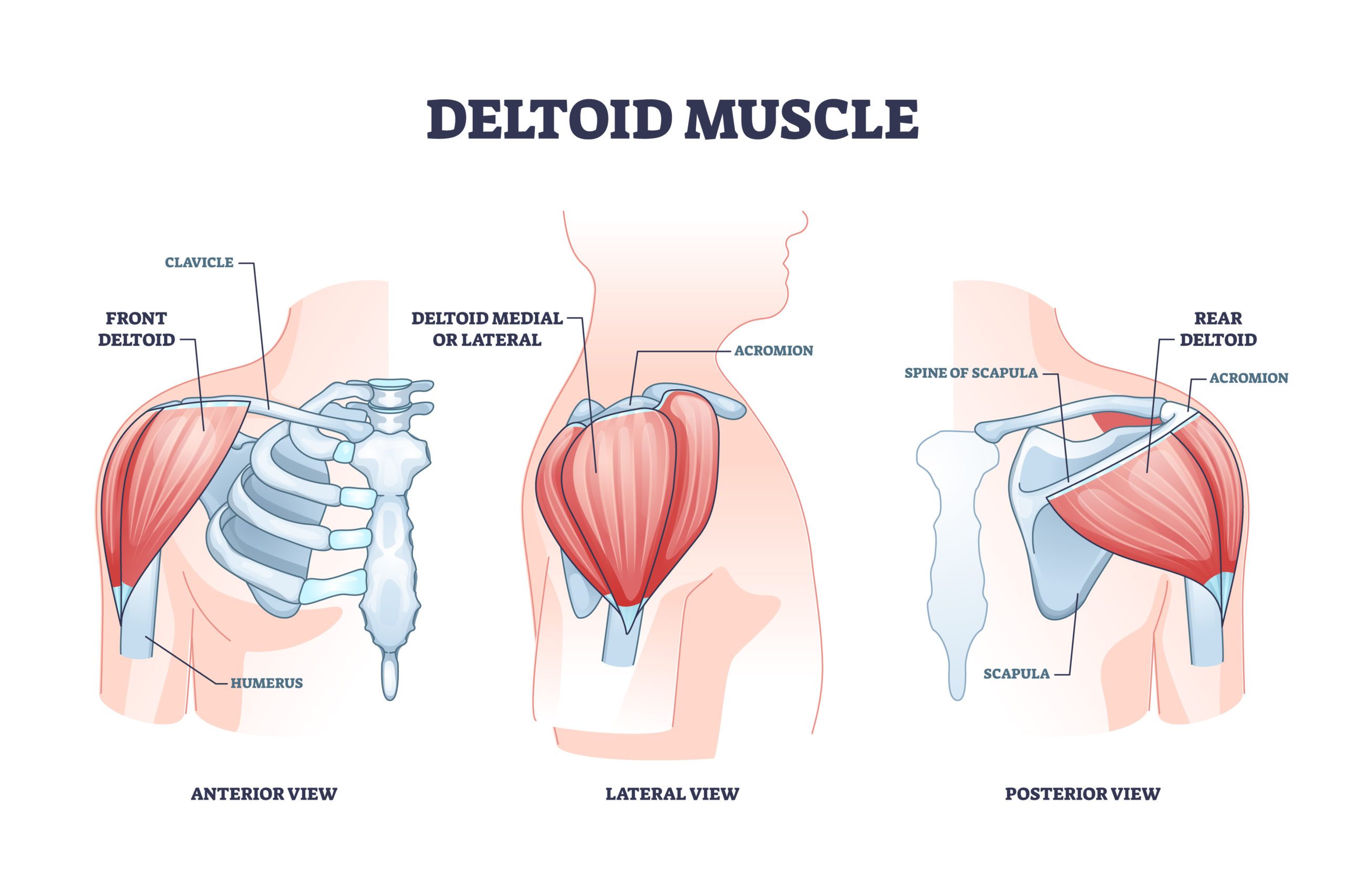
The dominant movers for the overhead press are the muscles that make up your shoulders and upper trunk like the anterior, lateral, and posterior deltoids. Your triceps are also involved to help push the weight at the top portion of the lift and straighten out your elbows.
Then you have the muscles that help stabilize the shoulder and scapula such as the bicep brachii, rotator cuff muscles, serratus anterior, and your traps. When you do this exercise standing, it becomes a full body exercise, so your core works hard to stabilize your spine and pelvis. Without this stability you’d be putting your joints in compromised positions.
The standing overhead press is considered a compound lift, since it works multiple joints and requires core stability.
The Marketplace: Shop Expert Programming from Real Coaches
Sometimes all you need to reach your destination on your fitness journey is an expert guide. We’ve got you covered.
The TrainHeroic marketplace is the only place to purchase programming from the World’s best coaches, delivered through the immersive training experience of the TrainHeroic app.
Browse from thousands of programs for any goal and every type of athlete.
Or, join a monthly programming membership to connect with a real coach and community of athletes training just like you. Try any programming subscription free for 7 days.
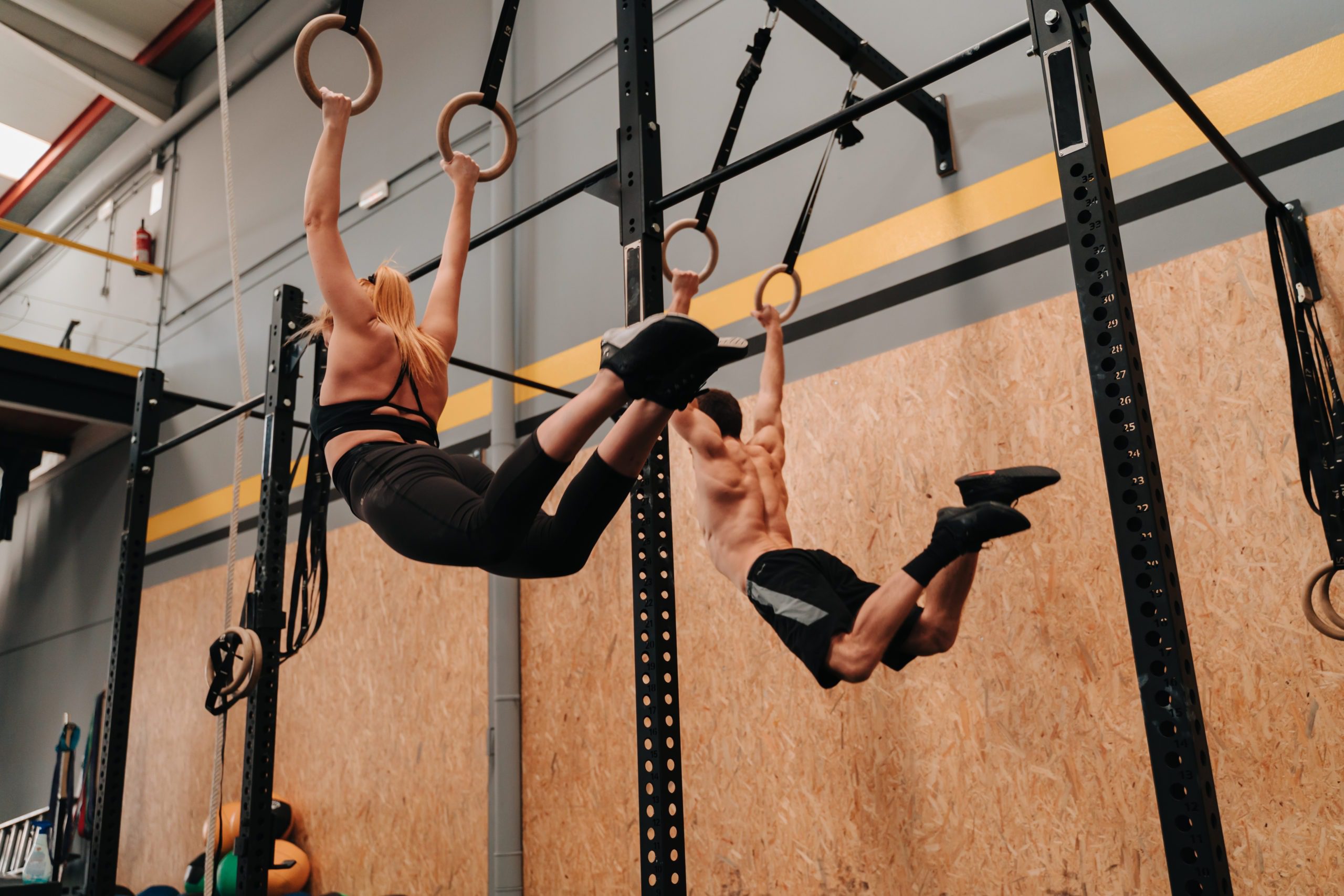
Standing Overhead Press Form
Whatever pressing variation you use will change some small elements of how you lift the weight (I’ll go into detail for alternative exercises), but consider this your general guide to good overhead press form:
- Whether you do this with a kettlebell, dumbbell or barbell, keep your elbows around 45 degrees in front of your body while pressing. A flared elbow to the side will put your shoulder joint under unnecessary stress.
- Keep a neutral spine to prevent your ribs from flaring out and low back from overarching. Brace your core, push your ribs down, and slightly tuck in your tailbone.
- Stack your shoulder blades — don’t let your shoulders shrug up into your ears.
- Press the weight overhead and make sure your arms are straight upon lockout. Good cue to remember is “biceps next to the ears.”
These tips are universal with almost all overhead pressing variations. For a super in-depth look at strict overhead pressing, see this blog: Strict Press: A How-To Guide
Why Do More Unilateral Variations?
Training unilaterally (one limb at a time) will expose your imbalances, whether it’s general weakness, mobility, or stability issues. For many of you, it could be a new stimulus to work unilaterally — introducing a new stimulus can mean new muscle growth. Unilateral work also means strengthening that weaker side while improving your form and other imbalances.
And don’t forget the benefits of working your core, specifically in anti-lateral flexion. Stick with some of these unilateral variations for some time, then go back to the barbell overhead press. Watch how much more stable you feel and how much stronger your core is.
You’ll increase your work output while keeping your joints happy. It’s beneficial to switch your focus for a while from strictly barbell to unilateral variations that challenge your body in different ways.
Try These Instead of Using a Barbell
Landmine Press
The landmine press is one of my go-to exercises for athletes who lack overhead mobility in their shoulders. You can set up the landmine anywhere that allows you to put one end of a barbell on the floor or against a wall without sliding (wedged between two plates should work).
If you have a landmine attachment, that’s perfect, but you can definitely do this movement without it. Once you have the bar set up and the weight added to the top end of the bar, you’re ready to lift.
Start with a standing split-stance position. Whatever arm you’re working first, the opposite leg is in front.
- Brace your core, squeeze your glutes and keep your hips squared, meaning don’t let them rotate.
- Grip the top end of the barbell at shoulder-height with your wrist straight.
- Push the weight up and forward, think about pushing with your elbow, not your hand.
- Your arm will be inclined in front of you between 45-60 degrees
- Don’t stop pushing when your arm is straight, give an extra push with your shoulder blades. Imagine you are reaching for the cookies on the top shelf at home.
- With control bring the weight back down to the front of your shoulder.
Half Kneeling Single Arm Overhead Press
This variation is great for building the skill of lifting overhead. Being in a half-kneeling stance will take the legs away from the movement, reducing the chances of you using leg drive to get the weight overhead. Your core works harder to stabilize your torso from bending to one side (lateral flexion) and you’re able to work on the mobility/stability of the shoulder complex individually.
I recommend starting with the less stable or weaker side first, and let that side be the guide. For example, if your left side is weaker and can only do 15lbs for 10 reps, your stronger side has to match that even if it can do more.
- Grab a light-moderate dumbbell or kettlebell and take a half-kneeling stance with one leg in front of you (like a lunge). Push into the floor with both feet to grip the ground with your toes.
- Slightly tuck your tailbone, squeeze your glutes and brace your core to prevent arching into your back or flaring your ribs.
- Bring your DB or KB into a front rack position on the arm opposite your grounded knee.
- Keeping a neutral spine, press the weight overhead by “punching” the sky with your knuckles, slightly rotating your arm so your knuckles are behind you. Remember not to let your elbows flare out, keep them around 45 degrees.
- Lift until your bicep is next to your ear, arm is straight, and shoulder blade is stacked.
- Lower the weight back to your starting position.
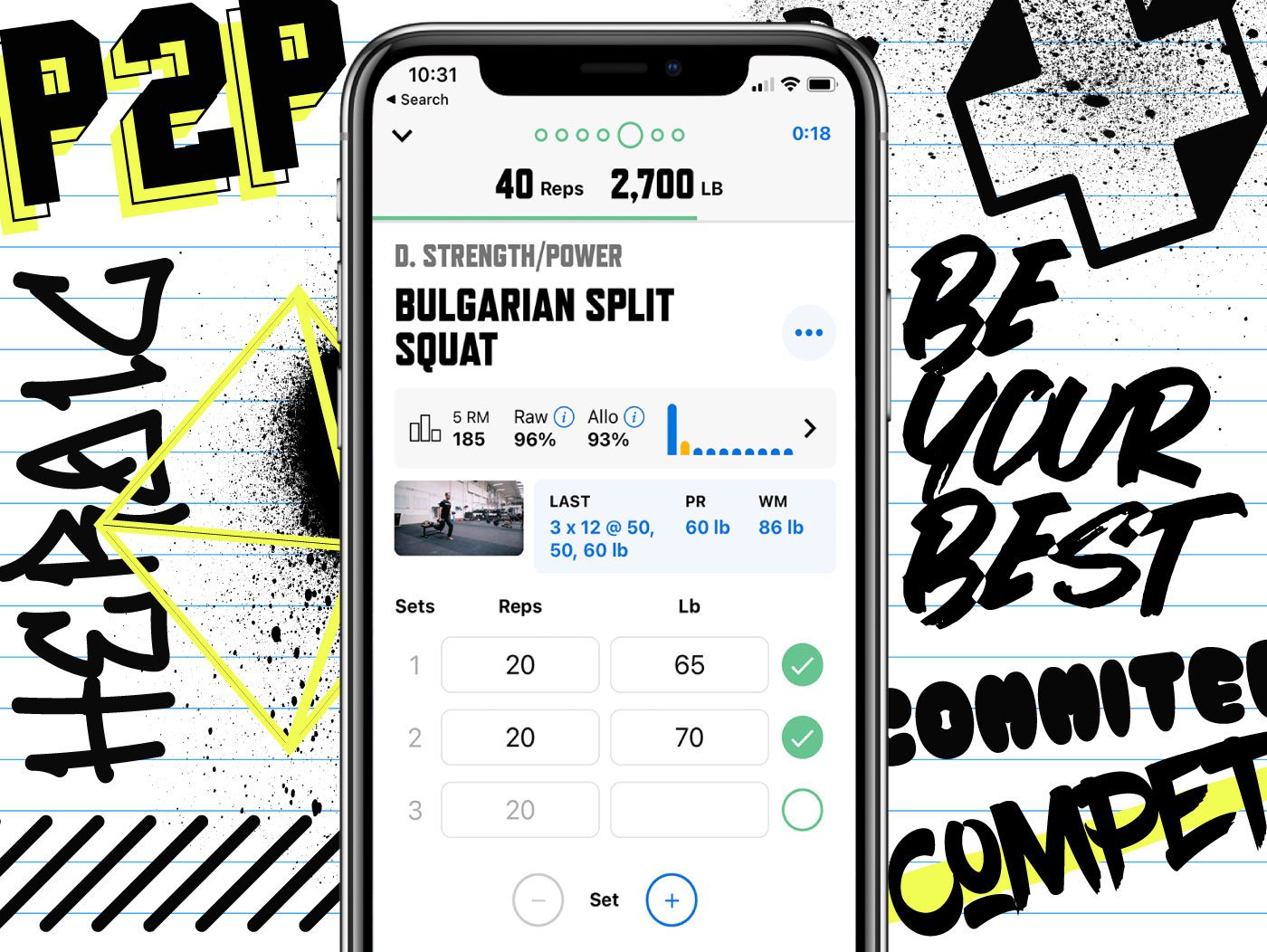

DOWNLOAD
trainheroic’s
free APP
Z Press
If you want a strong overhead and bulletproof shoulders, then work on the Z press. You can load this bilaterally or unilaterally, both are great options. Unilateral pressing will put more demand on your core by forcing you to keep a straight spine.
The Z press not only works on overhead strength and stability, but also trains a little hip and hamstring mobility. Mastering the Z press will make gains in the overall health of your shoulder tissues.
- Sit on the ground with your legs straight in front of you. If you lack some hip mobility you can widen your legs or sit on a plate.
- Bring your weight (pair or single dumbbells/kettlebells) into the front rack position in front of your shoulder.
- Brace your core, keep your spine neutral and drive your legs into the ground for more tension. Because you’re on the ground with no back support, your core is in high demand to keep your spine from moving.
- Punch the sky with your knuckles, slightly rotating your arm so the knuckles are behind you. Don’t let your elbows flare, keep them around 45 degrees.
- Lockout with your bicep next to your ear, arm straight, and shoulder blade stacked.
- Lower the weight back to your starting position.
Related Articles
3 Ways to Improve Mobility Without Stretching
Are you still trying the endless foam rolling and stretching exercises to get that deep squat position? We know how important mobility is for great, or even GOOD performance. All professional athletes have some comfortability in end ranges of motion. So, what else do...
The Ultimate Guide to Lunges: Queen of all Glute Exercises
Your glutes are the largest muscle group in your body. They’re responsible for almost everything your legs do—walking, running, jumping, squatting, lunging, and just standing upright. As far as moving through space goes, strong glutes are the bedrock of overall...
A Beginner’s Guide to Steel Mace Training
Author: Jesse Grund
Mace training will make you a better mover without it’s not confining you to a fixed space or predetermined range of motion. Second, it’s an offset load with 80 to 90 percent of the weight in the head. You’re also constantly having to resist rotation, which creates greater core engagement.

Join the community
Sign up for the latest training news and updates from TrainHeroic

About TrainHeroic
Support
Made with love, sweat, protein isolate and hard work in Denver, CO
© 2022 TrainHeroic, Inc. All rights reserved.
